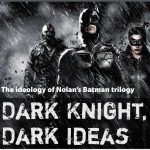The creative intention for the week
‘To develop my cinematography skills and practice advanced techniques which can be used for expressive meaning in film.’
Session 1 – Filming with Canon DSLR cameras
Menu & Settings
- Setting the White Balance
- Grid display
- rule of thirds / composition
- Auto and Manual Focus
- Recording Mode – (movie rec size)
- 50 fps, 1280×720 (frames per second / resolution)
- ISO (light sensitivity)
- darker environment – higher light sensitivity & ISO number
- lighter environment – lower light sensitivity & ISO number
- Aperture (quantity of light coming into the lens)
- low number (eg F1.8 = larger amount of light let in = shallow depth of field)
- high number (eg F8 = less light let in = deeper focus)

Different types of lens
- 18-55 mm kit lens
- Prime 35 mm lens
- Telephoto Lens
- Macro Lens
Session 2 & 3 – Play Time
Choose a minimum of four techniques to research and practice this week. Two from each list:
List 1
- Depth of Field & Pulling Focus
- Filming in Macro
- Impact of different lenses
- The Trombone Shot
- Bokeh
List 2
- The Rule of Thirds
- Frames within the Frame
- Symmetry & Leading Lines
- High Contrast Lighting (Low Key)
- The Quadrant System
You will need a clear example of what you’re trying to achieve and also a tutorial video or web page on how to achieve it practically.
For each technique you should aim for either a shot of about 10-15 seconds or two to three different shorter examples of the same technique being used in different ways.
Session 4 The Edit
- Use WeVideo to edit.
- Upload your footage
- Create a montage of cinematography techniques,
- Name the kit / technique in a caption at the start.
- At the end use a caption to suggest a potential meaning or impact of the technique on the audience
Reflective Journal
A short 1-2 minute video of your various experiments with composition. This will have been exported from WeVideo to YouTube – which should be possible directly.
A reflection on how it is possible to use camera to communicate meaning.





